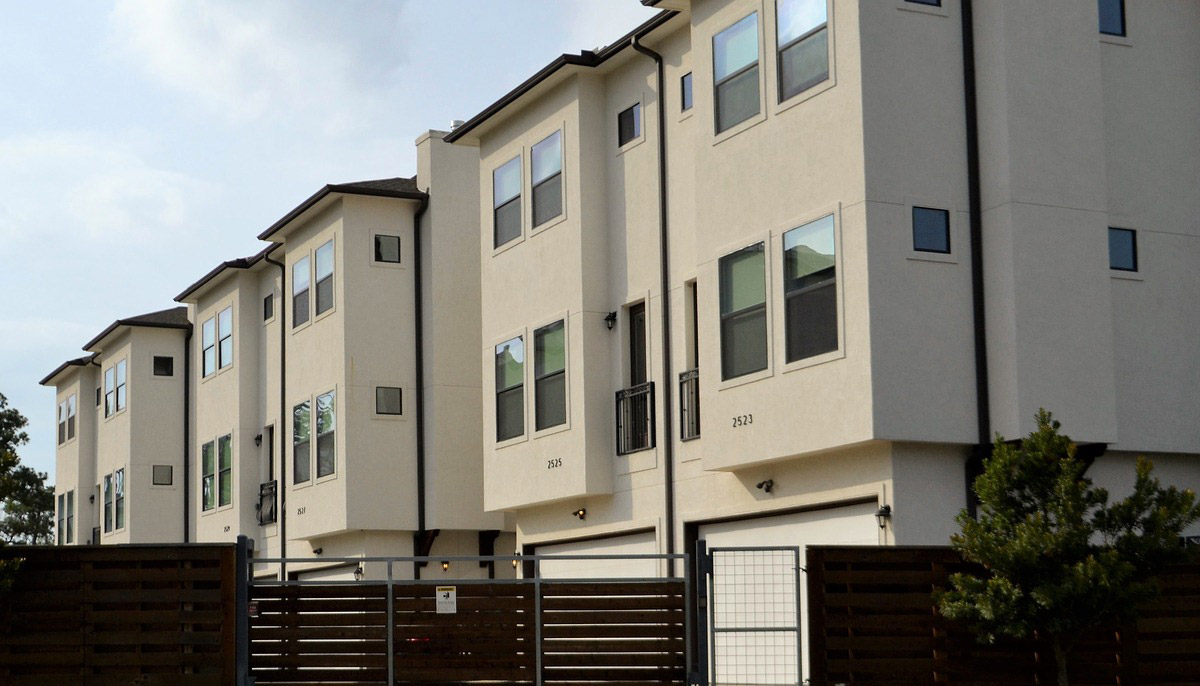The Section 8 rental assistance program ensures that low-income households across the country have access to safe, clean, and suitable housing in the United States. Under the Housing Choice Voucher program, HUD pays a significant portion of a household’s rent directly to the landlord. The tenant is then responsible for paying any remaining rent amount regarding payment standards.
If you want to apply for Section 8 rental assistance, there are key facts to keep in mind. The application process happens in multiple stages, starting with a preliminary application. Since the Section 8 HCV program is administered at the local level by public housing authorities, each PHA may have a slightly different procedure you’ll need to follow through its applicant portal.
6 Things to Include in Your Section 8 Preliminary Application
The first step in the application for any PHA is to complete and submit a preliminary application.
The following elements will be included in this pre-application:
- Name
- Current Address
- Size of Family
- Current Date and Time
- Ethnicity of Head of Household
- Annual Income
What Is a Pre-Application?
When you apply for a Section 8 housing choice voucher with a PHA with an open waiting list, the PHA may ask you to complete a preliminary application that helps the PHA determine your initial eligibility for the HCV program. Once the PHA reviews your pre-application, you will be added to the waiting list, or your application will be denied.
How to Fill Out the Application
Remember that a Section 8 housing voucher is administered at the local level, even though it’s a federal program. Specific policies and procedures may vary from PHA to PHA. Once your PHA has evaluated your pre-application, you may be asked to fill out a full application to keep you moving through the process.
Depending on your local PHA, you can submit your housing choice voucher application in a few different ways: online, in person, by phone, by mail, or by fax. You’ll need to find out the location and contact information for your local public housing authority. You can request appropriate forms by contacting customer service through your housing agency.
If you apply online, the forms you need are available there. You’ll also be taking advantage of the quickest and most efficient way to apply.
The full application will generally ask for the following information, though details might vary by PHA.
- Income Details – The PHA will need to know about all sources of income for your household, along with how often each household member receives a paycheck.
- Dependent Information – You will need to provide detailed information about everyone in your household who will live in the rental housing unit. This includes children, disabled family members, and elderly family members.
- Financial Information – You must provide details of your banking information so that the PHA can verify the financial data you’ve provided.
- Contact Information – Names and contact information for all previous landlords for whom you’ve been a tenant.
- Previous Arrests – You must provide information about any household member’s previous arrests, especially those related to drugs or alcohol.
- Prior Evictions – You must provide detailed information about any prior eviction from any public housing.
- Estimated Expenses – Estimates of any dependent-related expenses, medical expenses, or expenses related to childcare or disability care.
- Self-Check – Self-certification that all information you are submitting is accurate to your knowledge
6 Things to Include in Your Section 8 Preliminary Application
1. Name
This one may sound obvious, but you’ll need to include your full legal name on your Section 8 housing pre-application. You must also provide the names of the members of your household. Make sure all identification – driver’s licenses, passports, and Social Security cards match the names on your pre-application.
2. Current Address
The PHA will eventually need to check on your rental history, so you’ll need to provide your current address. You may also be asked to submit documentation that proves your current residence, such as utility bills or official mail received at the address. While HUD guidelines do not stipulate that you must be a resident of the city or state where you’re applying for Section 8 housing assistance, local PHAs can establish preferences for their area. Knowing where your current residence is located may influence where you ultimately land on a waiting list.
If you have been displaced from your home and are homeless, you may be able to work with a local disaster relief organization or service agency to provide documentation noting that you do not currently have a permanent address.
3. Size of Family

The amount of household members plays an important role in whether your application will qualify for Section 8 housing assistance benefits. Household size is used with your family income to determine how much rent you should pay.
4. Current Date and Time
To establish a record of the beginning of your application process, you must include the appropriate current date and time as you submit your pre-application.
5. Ethnicity of Head of Household
Most PHA pre-applications will ask you to include the ethnicity of the head of the household – in some cases. You also may be asked to include the head of household’s Social Security number and date of birth.
6. Annual Income
You will need to provide both figures and documentation for the income of everyone in your household. Your PHA will consider many factors regarding your income limit, so you should include everything from hourly wages to overtime pay, bonuses, pensions, Social Security retirement benefits, disability benefits, child support, alimony, etc. The PHA will want to see whether your income qualifies for the Section 8 housing choice voucher program.
To be accepted into the program, your household must be classified as low-income, very low-income, or extremely low-income. Low-income families generally earn up to 80% of the median income in the area. Very low-income households earn up to 50% of an area’s median income, and extremely low-income households earn approximately 30% of the area median income.
A local PHA will typically favor its extremely low-income applicants, then its very low-income applicants, and then its low-income applicants to aid in affordable housing. The information you provide in your pre-application may determine the priority your household receives on the PHA’s waiting list. And even if you think your household doesn’t meet the requirements for low-income, you should apply anyway. Some local housing authorities can grant vouchers to moderate-income families if housing assistance is available.
Section 8: Where to Apply
If you know where you want to live, you should apply with the PHA for that area. To increase the chances of being approved, some applicants may apply with several different PHAs, all at the same time. You can apply through any PHA at anytime, as long as its Section 8 waiting list is open. You do not have to be a resident of the area the public housing authority serves.
Waiting lists open and close based on the availability of housing units, so you should check with any PHA you’re interested in to find out whether they are accepting applications. Also, you may see public advertisements when the waiting list is open and the PHA accepts housing assistance applications.
Reasons Your Application Was Denied
Section 8 applications are typically denied for a few common reasons, including the following:
Ineligible according to criteria – This could be because of income requirements, college enrollment, immigration status, or any other specific eligibility criteria required by the PHA with which you’re applying. If the PHA determines that you do not meet a particular criterion for eligibility, it will reject your application.
Criminal History – If you or anyone in your household has been convicted of criminal activity within public housing, your application will be denied. HUD is especially vigilant about rejecting applications from those involved in drug-related criminal activity in a former public housing assignment. There are strict tenant rules and regulations to ensure that the environment for Section 8 renters is as safe and productive as possible.
Previous Eviction from Public Housing – If the PHA finds evidence that you or any member of your household has been previously evicted from a public housing unit within the last five years, your application will be denied.
Outstanding Balance with Another PHA – If you or any household member has an outstanding balance with any PHA in the nation, your application will not be approved.
Decisions to approve or deny applications are generally left to the local PHA’s discretion, and PHAs, from time to time, may also consider mitigating circumstances when choosing whether to accept or deny an application.
How to Appeal a Section 8 Denial
The PHA will send you a formal letter outlining its decision and reason for denial if it chooses not to advance your Section 8 application. This letter will also be instructions for how to request an informal appeal, along with information about your right to do so.
If you let your PHA know that you would like to proceed with an informal appeal, the public housing agency will assign a reviewer to examine your applicant case closely. This reviewer will examine the PHA’s decision to deny you as an applicant and determine if the judgment was an error. You can also submit a statement outlining your case's merits and explaining why it was a mistake to be denied. Following the informal review, your PHA will send you another letter outlining its final decision.
Applying for Section 8 Housing Benefits
Thanks to the Section 8 housing choice voucher program, as many as 3 million Americans have access to safe, clean, and suitable housing for their families. If you feel the Section 8 housing assistance program is right for you and your family, it’s best to reach out as soon as possible to a local PHA in the area where you’d like to live. Spaces on waiting lists are hard to come by – the demand for a Section 8 voucher is far greater than the supply in most areas. Make sure you clearly understand the Section 8 application process in order to apply for fair housing. This is a great first step toward receiving benefits from this valuable government housing assistance program.
 Benefits.com Advisors
Benefits.com Advisors
With expertise spanning local, state, and federal benefit programs, our team is dedicated to guiding individuals towards the perfect program tailored to their unique circumstances.
Rise to the top with Peak Benefits!
Join our Peak Benefits Newsletter for the latest news, resources, and offers on all things government benefits.



















